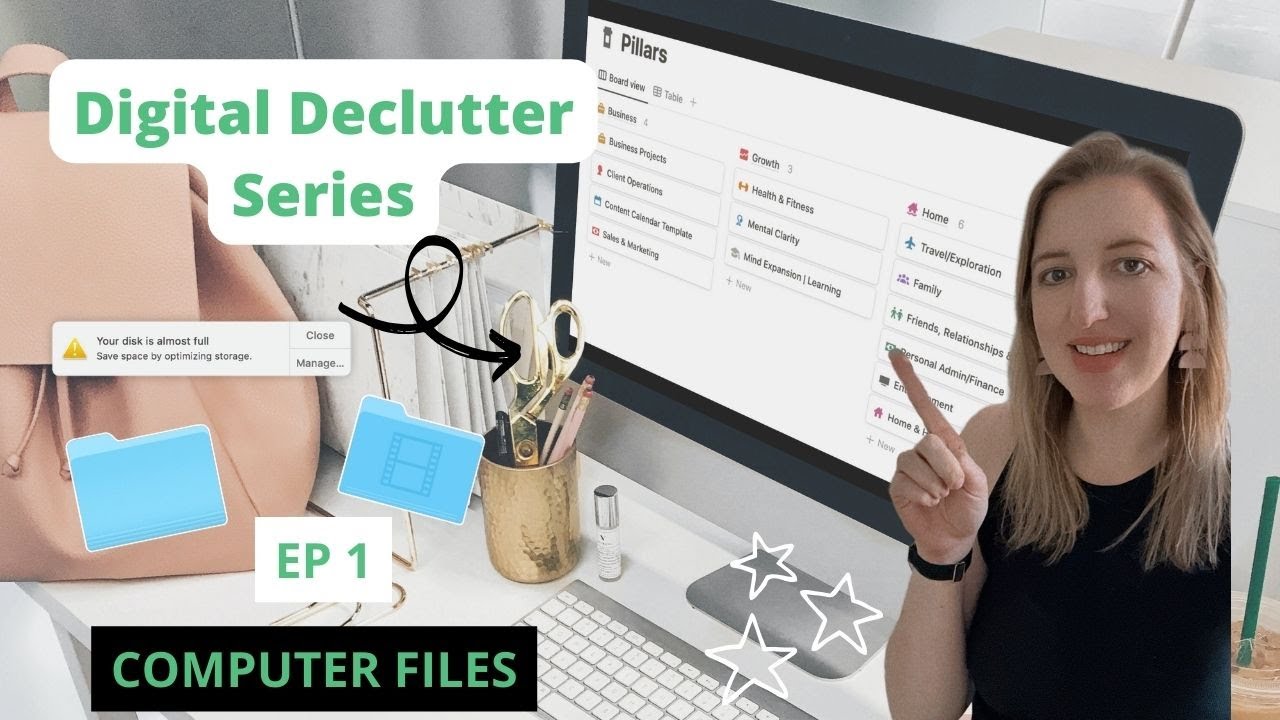Prosedur Penyimpanan Dokumen Berbasis Digital || Elemen 5 Dasar-dasar MPLB
Summary
TLDRIn this educational video, Ibu Astuti explains the digital document storage procedure, emphasizing the importance of systematic organization using chronological systems. She discusses the basics of digital archiving, focusing on moving, storing, and indexing documents. The video covers key steps such as preparing folders, scanning physical documents, and renaming files based on a systematic indexing method (date-based). Additionally, Ibu Astuti introduces practical tips for managing both incoming and outgoing documents, ensuring easy retrieval and safeguarding data. The content is structured to help users effectively manage digital archives in a business environment.
Takeaways
- 😀 The video discusses the procedure for digital document storage, emphasizing the importance of properly indexing and storing documents.
- 😀 The first step in digital document storage involves renaming files, following indexing results from previous processes.
- 😀 Digital document storage is compared to manual archiving but involves three basic components: transferring, storing, and indexing the documents.
- 😀 A key system for document storage is the chronological system, organizing documents based on the date of occurrence or transaction.
- 😀 There are five common systems for document storage: alphabetical, subject-based, numerical, geographical, and chronological.
- 😀 Digital document storage can be done using various storage media such as hard drives, flash drives, or cloud storage services like Google Drive and Dropbox.
- 😀 One of the crucial steps is to classify documents based on their form or source before storing them.
- 😀 To ensure data security and prevent document loss, backups should be regularly done to alternative storage devices or cloud platforms.
- 😀 The video demonstrates how to create folders on a computer or laptop to organize documents for efficient retrieval, starting with folders for incoming and outgoing mail.
- 😀 The importance of maintaining proper indexing, including using date-based naming conventions (e.g., year_month_day), is highlighted to make files easily searchable and categorized.
- 😀 Finally, the video provides a practical example of scanning a physical letter, renaming it according to the indexing system, and organizing it within the digital storage structure.
Q & A
What is the main focus of the video?
-The video focuses on explaining the digital document storage procedure, specifically using a chronological system.
What are the three basic components required for digital archiving?
-The three basic components for digital archiving are transferring documents, storing documents, and indexing documents.
What are the five techniques of document storage systems mentioned in the script?
-The five techniques of document storage systems mentioned are alphabetical, subject-based, numerical, regional, and chronological systems.
What is the purpose of using a chronological system for document storage?
-The chronological system organizes documents based on the date of occurrence or transaction, making it useful for industries like finance where dates are crucial.
What are the steps involved in the procedure for digital document storage?
-The procedure involves preparing storage space, transferring documents (scanning or converting), storing documents in appropriate folders, and indexing documents for easy retrieval.
Why is it important to classify documents before storing them digitally?
-Classifying documents ensures that they are organized by type, form, or source, which helps in maintaining an efficient and searchable digital archive.
What precautions are mentioned to prevent data loss or corruption in digital document storage?
-To prevent data loss or corruption, it's important to back up documents on external storage devices such as hard drives, flash drives, or cloud services.
How does the video recommend naming and organizing the folders for digital documents?
-The video suggests naming folders based on months (January to December) and using numbered prefixes to ensure chronological order. For example, 'Month 1_January'.
What method is used to transfer physical documents to a digital format?
-Physical documents are transferred to digital format primarily through scanning, which converts them into PDF files.
How is indexing done for documents in the chronological system?
-Indexing involves naming the file with the year, month, and day, such as '2023_01_09', and adding additional details about the content (e.g., 'meeting invitation'). This helps in easily identifying and retrieving documents.
Outlines

هذا القسم متوفر فقط للمشتركين. يرجى الترقية للوصول إلى هذه الميزة.
قم بالترقية الآنMindmap

هذا القسم متوفر فقط للمشتركين. يرجى الترقية للوصول إلى هذه الميزة.
قم بالترقية الآنKeywords

هذا القسم متوفر فقط للمشتركين. يرجى الترقية للوصول إلى هذه الميزة.
قم بالترقية الآنHighlights

هذا القسم متوفر فقط للمشتركين. يرجى الترقية للوصول إلى هذه الميزة.
قم بالترقية الآنTranscripts

هذا القسم متوفر فقط للمشتركين. يرجى الترقية للوصول إلى هذه الميزة.
قم بالترقية الآنتصفح المزيد من مقاطع الفيديو ذات الصلة

NUMERIC FILING SISTEM || PENYIMPANAN ARSIP SISTEM NOMOR 'TERMINAL DIGIT'

2 - PRÁCTICAS DE ARCHIVO - ORDENACIÓN Y FOLIACIÓN DE ARCHIVOS

DASAR-DASAR MPLB ELEMEN 5 DOKUMEN BERBASIS DIGITAL || PROSEDUR PENANGANAN DOKUMEN

2024/4/13 'Pengarsipan Dokumen Secara Manual

Organizing Your Computer Files: Digital Declutter System Series Ep 1

What is Document Management Software Workflow?
5.0 / 5 (0 votes)
